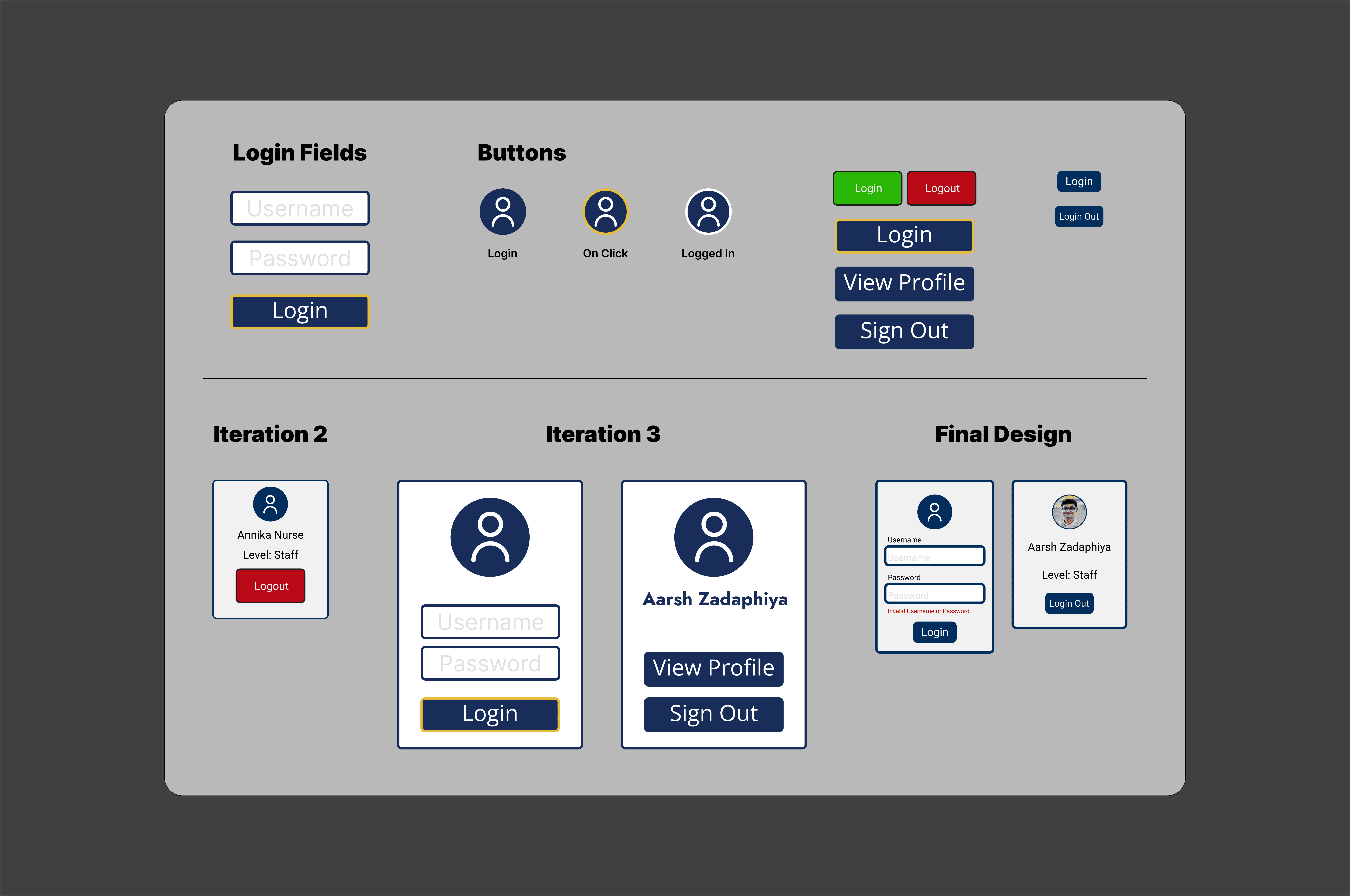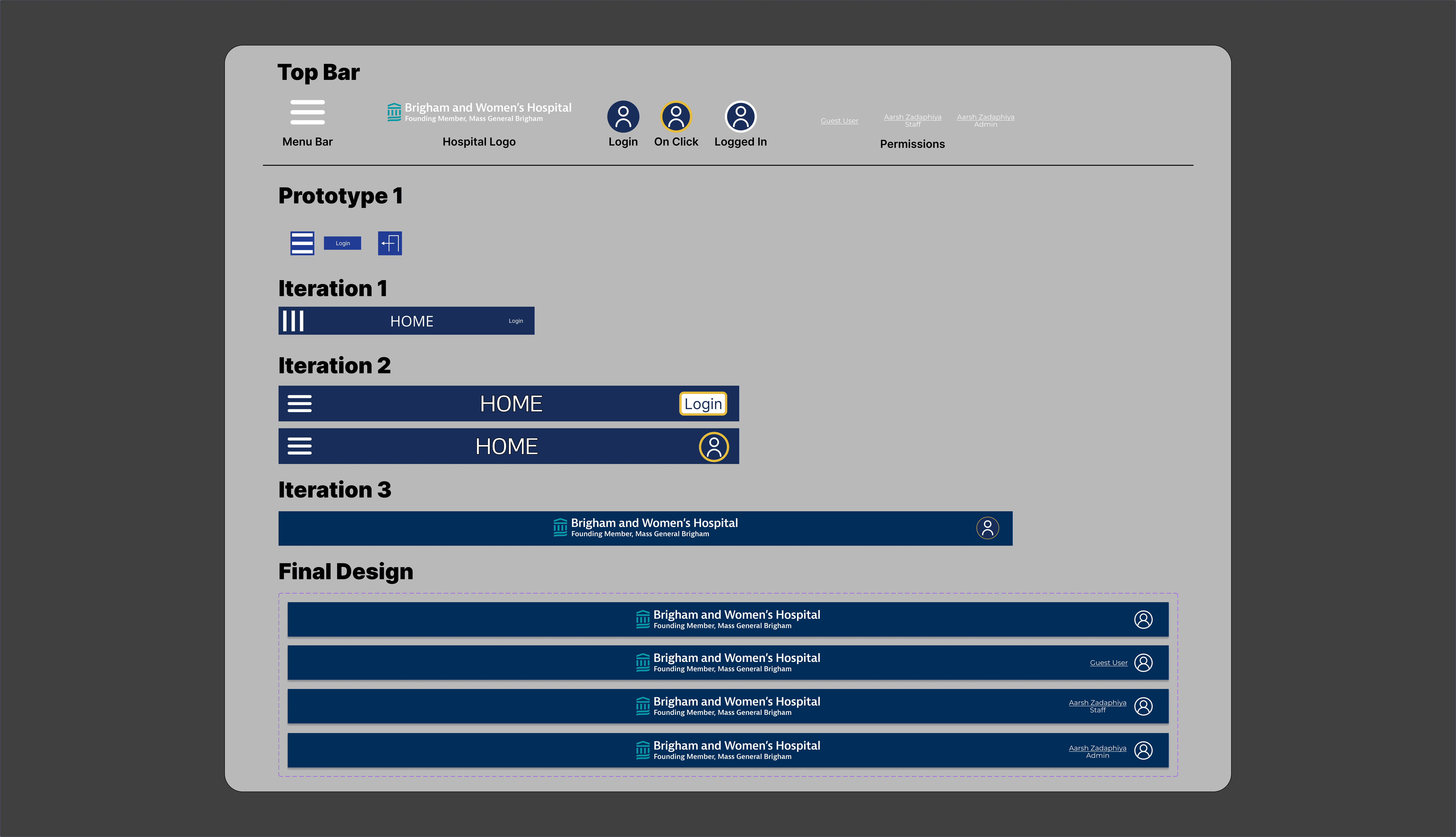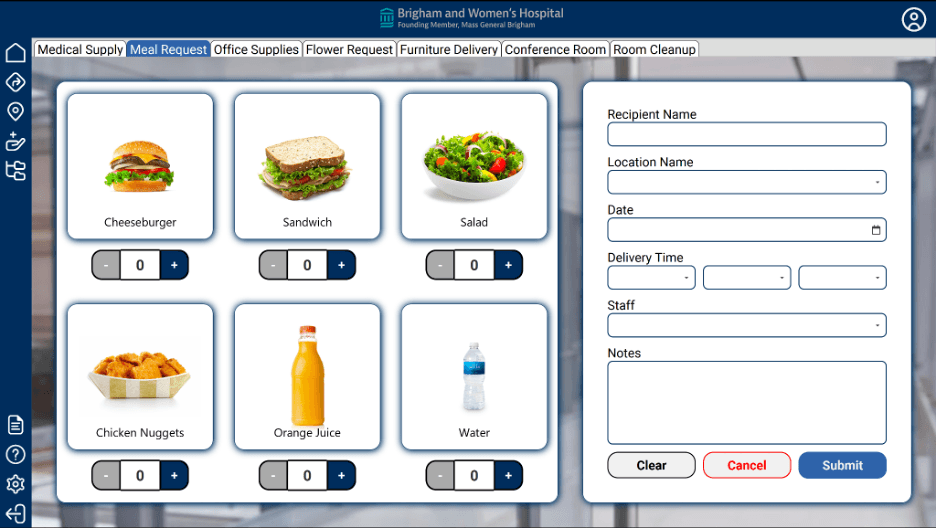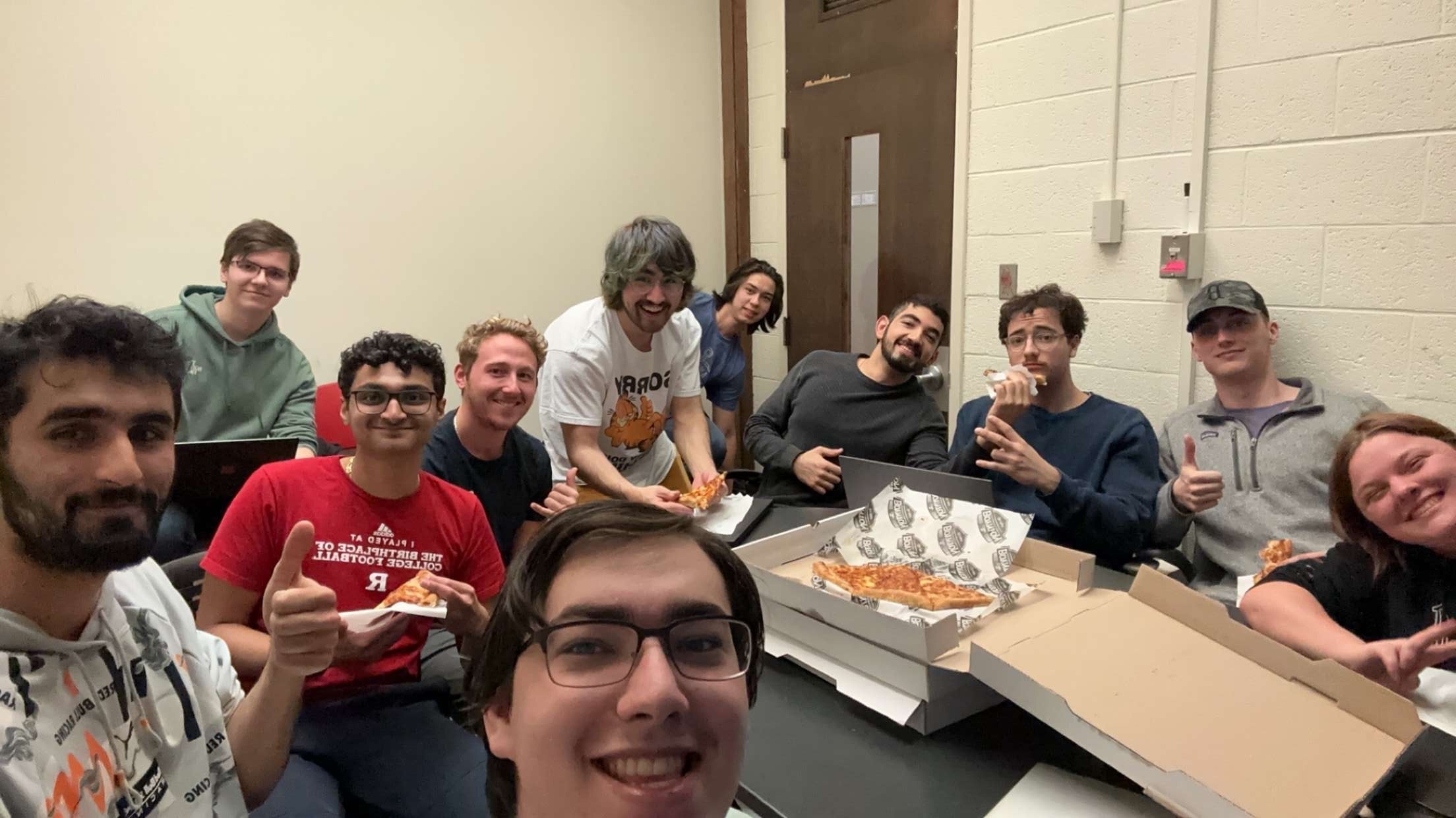
Challenges & Downsides
Before jumping into development, we spent time understanding the hospital's operational needs and user goals. Through informal interviews and environment analysis, we identified three key requirements that guided our design decisions.
Fast-Paced Environment
Hospital workflows demand speed. Systems must be responsive and minimize steps to complete a task.
Easy Navigation
Users should be able to quickly move between features like maps, service requests, and signage with little to no training.
Touch-Friendly Design
As kiosks are used in shared, high-traffic areas, the interface needed to prioritize large buttons, tap targets, and gesture simplicity.
Defining the Solution
I focused on designing and developing the Service Request interface, which allowed hospital staff to submit requests for supplies, room cleanups, and more using a streamlined, cart-based system. To support the team and maintain consistency across the application, I also created a reusable design system in Figma, including buttons, fields, and layout patterns, that we used throughout the kiosk. While the project also included features like map editing, signage, and pathfinding, I kept my scope centered on delivering an intuitive, touch-optimized UI for the service workflows.
Design & Development
Overview
Overlapping Considerations:
Everyone needed quick and intuitive access to hospital services
The system had to be simple enough for new users and reliable for daily use
Some users needed to place orders on behalf of others or manage logistics
Accessibility, ease of training, and clarity were non-negotiables across roles













